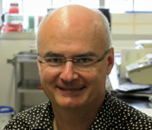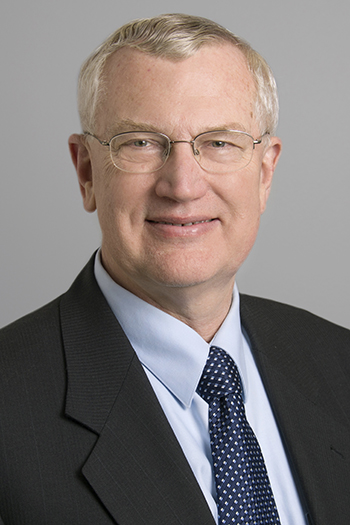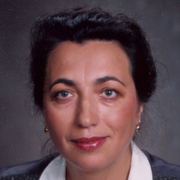Theme: Shaping the Future for Innovations in Pathology and Oncology Research
American Pathology 2018
The 15th International Congress on American Pathology & Oncology Research is to be held at Chicago, USA during December 03-04, 2018 hosted by Conferences Series LLC LTD. This conference could be an exceptional event that brings along a novel and International mixture of giant and medium pathology analysis, leading universities and Oncology Research analysis establishments creating the conference an ideal platform to share expertise in Pathology, Oncology, Cancer Research and related fields.
Pathology is a major field in modern medical practice and diagnosis. The global digital pathology market, valued at $1.98 billion in 2012, is estimated to reach $5.7 billion by 2020. The In vitro diagnostics market revenue is expected to reach $74.65 billion by 2020, from the market value of $53.32 billion in 2013, at a CAGR of 5.34% during 2014-2020. Diagnostic Medicine has $35 billion market, growth 5-7% yearly. Pathology labs will take approximately $15-16 billion in revenue, and they will spend roughly 12% of their revenues with their suppliers all over USA.
Oncology research includes Clinical Oncologists, Registered Nurses, Nurse practitioners and the entire medical team involved in patient care, researchers, professional, early career individuals and patient advocates who wish to learn principles of tumour immunology and immunotherapy well as decision makers will come to discuss and debate on various aspects of the challenges, risks and investment opportunities throughout the complete information of Cancers.
Who Should Attend?
Pathologists, Oncologists, Cancer Researchers, Cancer Pharmacologists, Cancer Therapists, Clinical Pathologists, Surgical Pathologists, and other healthcare professionals interested in the latest advances and techniques in the field. Another segment of target audience is Pharmaceutical researchers, Clinical organizations, Educational institutes.
The 15th International Congress on American Pathology & Oncology Research will exhibit the products and services from commercial and non-commercial organizations like Pathology Lab Equipment manufacturers, Cell Diagnostics laboratories, Clinical Trial Sites, Business delegates and Equipment Manufacturers.
Why to attend American Pathology and Oncology Research 2018?
- Best platform to develop new partnership & collaborations.
- Best location to speed up your route into every territory in the World.
- 89% our conference attendees are the Key contact in their labs purchasing decisions.
- Our exhibitor booths were visited 4-5 times by 80% of the attendees during the conference.
- Past exhibitor’s feedback reveals ample of enquiries perceived from the conference attendees.
- Network development with both Academia and Business.
Pathology and Oncology Research 2018 is going to be held at Chicago, USA during December 03-04, 2018. The conference is organized with the theme “Shaping the Future for Innovations in Pathology and Oncology Research" which comprised of 29 sessions/tracks designed to offer comprehensive sessions that address current issues in this field.
Pathology is a branch of medical science primarily concerning the examination of organs, tissues, and bodily fluids in order to make a diagnosis of disease. Pathology is a major field in modern medical practice and health care. Pathology outlines the disease condition and treatment by using different pathology laboratory techniques. Pathology is used in the diagnosis, treatment and management of an increasing range of clinical conditions. Pathology investigations are an integral part of the clinical consultation and procedural process with overseas studies indicating that 70-80 per cent of all health care decisions affecting diagnosis or treatment involve a pathology investigation. 40% of pathology testing is used for diagnostic purposes, 40% for monitoring and 20% for preventative purposes.
Oncology is a branch of medicine that deals with tumours. A medical professional who practices oncology is an oncologist. Integrative oncology manages the mind, body, and spirit. Modalities of movement, touch, nutrition, and mindfulness are used within conventional cancer care to address and improve symptoms and quality-of-life. That is why many practitioners, including medical doctors, have embraced the rapidly expanding field of integrative oncology, which fuses the best of conventional and alternative treatments.Immuno-oncology therapies activate our immune system, making it able to recognise cancer cells and destroy them. Since cancer cells are very different from normal cells in the body, the immune system attacks them when it is able to recognise them. Neuro-oncology evaluates and treats people with primary and secondary tumours of the brain, spinal cord, and the membranes surrounding the brain and spinal cord (meninges).
Theme: Shaping the Future for Innovations in Pathology and Oncology Research
Track 1: Oncology
Oncology is a branch of medicine that deals with tumors. A medical professional who practices oncology is an oncologist. Integrative oncology manages the mind, body, and spirit. Modalities of movement, touch, nutrition, and mindfulness are used within conventional cancer care to address and improve symptoms and quality-of-life. Oncologic emergencies, as the term implies, are complications resulting from a cancer itself, a paraneoplastic syndrome, or from treatment of the cancer, that require immediate attention and reversal, if possible.
Track 2: Molecular Pathology
Molecular pathology is an emerging discipline within pathology which is concentrated in the study and conclusion of ailment through the examination of molecules within organs, tissues or bodily fluids. Molecular pathology imparts a few parts of practice with drug development, disease management strategies and is sometimes considered a crossover discipline. It is multi-disciplinary in nature and concentrates primarily on the sub-minute parts of diseases. A key consideration is that more accurate diagnosis is possible when the diagnosis is based on both the morphologic changes in tissues and on molecular testing of diseases like cancer. In this sub topics Molecular pathology is very useful in drug development and cancer. There are 5 associations and societies and the main association for Molecular Pathology is the Association of Molecular Pathology in USA. 78 universities are working on Molecular Pathology. Companies and hospitals around USA are associated with pathology. NIH has released $197,088 for Molecular Pathology research
Track 3: Cancer Biomarkers
Cancer biomarkers, particular those associated with genetic mutations or epigenetic alterations, often offer a quantitative way to determine when individuals are predisposed to particular types of cancers. A cancer biomarker refers to a substance or process that is indicative of the presence of cancer in the body. A biomarker may be a molecule secreted by a tumor or a specific response of the body to the presence of cancer. Genetic, epigenetic, proteomic, glycomic, and imaging biomarkers can be used for cancer diagnosis, prognosis, and epidemiology.
Track 4: Clinical Oncology
Clinical Oncology includes Medical Oncology (MO) , Surgical Oncology (SO) , Gynecologic Oncology, Hematologic Malignancies. Medical oncology communicates the results of clinical and experimental research in oncology and haematology, particularly with experimental therapeutics with the field of immunotherapy and chemotherapy. A surgical and non-surgical oncologist specializes in the removal of the tumours and surrounding tissue during an operation. A surgical also performs biopsies (the removal of a small amount of tissue for examination under a microscope). Gynecologic oncology is a specialized field of medicine that focuses on cancers of the female reproductive system, including ovarian cancer, uterine cancer, vaginal cancer, cervical cancer, and vulvar cancer.
Track 5: Surgical Pathology
Surgical pathology is the investigation of tissues expelled from living patients amid surgery to help analyze a malady and focus a treatment arrangement. Regularly, the surgical pathologist gives consultation benefits in a wide assortment of organ indications and subspecialties. Surgical pathologists give symptomatic data and/or second conclusions. Case in point, when performing breast cancer surgery, a surgical pathologist's examination of tissues separated during the surgery can help the specialist to figure out if to evacuate lymph nodes under the arm, also. Surgical pathology incorporates both the physical examination of the tissue with the bare eye, and inspecting handled tissue under a magnifying instrument. There are 92 universities all over the USA where pathology research works are carried out in that main universities engaged in Surgical Pathology research are Stanford university of Medicine, John Hopkins University, Duke University and Washington University. National institute of cancer have released $ 1,265,135 for Surgical Pathology research.
Track 6: Cancer Diagnostics
Cancer Diagnostics plays an important role throughout your cancer treatment. Physical Examination, Laboratory tests, Biopsy, Imaging tests, Nuclear medicine scans, Endoscopy, Genetic tests are some of the diagnostic tests which are being carried out in the present world. Cancer Diagnostic testing involves tests and procedures to confirm the presence of disease and identify the correct tumor type, location, extent and stage.
Track 7: Hematology Oncology
The diagnosis, treatment and prevention of blood diseases (hematology) and cancer (oncology) and research into them. Hematology-oncology includes such diseases as iron deficiency anemia, hemophilia, sickle cell disease, the thalassemias, leukemias and lymphomas, as well as cancers of other organs. Tumors of the hematopoietic and lymphoid tissues or haematopoietic and lymphoid malignancies are tumors that affect the blood, bone marrow, lymph, and lymphatic system
Track 8: Breast Pathology
Breast cancers can be divided into two main overarching groups: the carcinomas and the sarcomas. Carcinomas are cancers that arise from the epithelial component of the breast. The epithelial component consists of the cells that line the lobules and terminal ducts; under normal conditions, these epithelial cells are responsible for making milk. Carcinomas comprise the vast majority of all breast cancers, and will be further discussed below. Sarcomas are rare cancers that arise from the stromal (connective tissue) components of the breast. These stromal component cells include myofibroblasts and blood vessel cells, and cancers arising from these "supportive" cells include phyllodes tumors and angiosarcoma. Sarcomas account for less than 1% of primary breast cancers.
Track 9: Cancer Research
Metastasis, or metastatic disease, is the spread of a cancer or other disease from one organ or part to another not directly connected with it. An oncovirus is a virus that can cause cancer. This term originated from studies of acutely transforming retroviruses in the 1950–60s, often called oncornaviruses to denote their RNA virus origin. Carcinogenesis or oncogenesis or tumorigenesis is the actual formation of a cancer, whereby normal cells are transformed into cancer cells. Mutagenesis is a process by which the genetic information of an organism is changed in a stable manner, resulting in a mutation. It may occur spontaneously in nature, or as a result of exposure to mutagens. Apoptosis is a form of physiological cell death mediated by caspases, a unique family of intracellular cysteine proteases.
Track 10: Pediatric Oncology
The term 'pediatric oncologist' usually refers to physicians who have specialized in pediatrics and then received further training in medical oncology and hematology. This means that rather than using surgery or radiation therapy to treat cancer, pediatric oncologists typically use medications and chemotherapy. Myeloid leukemia is a type of leukemia affecting myeloid tissue. In medicine, histiocytosis refers to an excessive number of histiocytes, (tissue macrophages), and is typically used to refer to a group of rare diseases which share this as a characteristic.
Track 11: Cytopathology and Histopathology
Cytopathology is a diagnostic technique that examines cells from various body sites to determine the cause or the nature of disease. The first cytopathology test developed was the Pap test which has been widely utilized in the last 50 years for screening and diagnosing of cervical cancer and its precursors. The Pap test is considered the most successful screening test in medical history. Histopathology is the study of tissues (histology) and cells (cytology) and usually includes morbid anatomy (autopsies). Many refer to this specialty as Cellular Pathology. Histopathologists need good attention to detail for examining tissue and diagnosing disease. Histopathology involves the examination of sampled whole tissues under the microscope.
Track 12: Radiation Oncology
A radiation oncologist is a specialist physician who uses ionizing radiation (such as megavoltage X-rays or radionuclides) in the treatment of cancer. Radiation oncology is one of the three primary specialties, the other two being surgical and medical oncology, involved in the treatment of cancer. Brachytherapy is an advanced cancer treatment. Radioactive seeds or sources are placed in or near the tumor itself, giving a high radiation dose to the tumor while reducing the radiation exposure in the surrounding healthy tissues.
Track 13: Clinical Pathology
Clinical Pathology is a medical specialty that is concerned with the diagnosis of disease based on the laboratory analysis of bodily fluids. Clinical Pathology is one of the major classifications of Pathology. Clinical Pathology is accomplished through practical diagnosis of disease based on the laboratory analysis. Clinical Pathology is also useful in diagnosis of recent out broken diseases like Zika fever which is caused by zika virus. Zika virus is transmitted to people primarily through the bite of an infected Aedes species mosquito. Clinical Pathology so far covers the diagnostic testing, Implications of cancer patients, Prognostic value, clinical and non-clinical toxicology testing, Clinical finding of cancer and other disease. It emerges other subtopic like Neuropathology. The following topics are the latest research going on in clinical Pathology. There are 36 associations and societies all over the world and 90 universities are working for clinical pathology. Companies/Laboratories like Clinical Pathology Laboratories and other diagnostics laboratories are leading in research of this clinical pathology and 3400 hospitals around USA are associated with pathology.
Track 14: Cancer Therapeutics
Cancer can be treated by surgery, chemotherapy, radiation therapy, hormonal therapy, targeted therapy (including immunotherapy such as monoclonal antibody therapy) and synthetic lethality. Complete removal of the cancer without damage to the rest of the body (that is, achieving cure with near-zero adverse effects) is the ideal goal of treatment and is often the goal in practice. Synthetic lethality arises when a combination of deficiencies in the expression of two or more genes leads to cell death, whereas a deficiency in only one of these genes does not.
Track 15: Anatomical Pathology
Anatomical pathology is the major specialty of pathology that deals with the study of the morphologic aspects of disease. Anatomical Pathology concerns with the diagnosis of tissue and organ based macro or microscopic testing. The latest research undergoes from the following topics like Radiofrequency identification & specimen tracking, advanced biosafety practices, Multi-model anatomical pathology and Anatomical pathology of sexually transmitted diseases. There are 36 associations and societies in USA and 18000 pathologists and 90 universities in USA. And 630 companies and 3400 hospitals around USA associated with pathology. The market revenue is expected to reach $74.65 billion by 2020 at a CAGR of 5.34% during 2014-2020. Diagnostic Medicine market growth rate is 5-7% yearly.
Track 16: Cancer Stem Cells and Drug Resistance
Cancer stem cells are cancer cells that possess characteristics associated with normal stem cells, specifically the ability to give rise to all cell types found in a particular cancer sample. CSCs are therefore tumorigenic (tumor-forming), perhaps in contrast to other non-tumorigenic cancer cells. The "mutation in stem cell niche populations during development" hypothesis claims that these developing stem populations are mutated and then reproduce so that the mutation is shared by many descendants. These daughter cells are much closer to becoming tumors and their numbers increase the chance of a cancerous mutation. De-differentiation of mutated cells may create stem cell-like characteristics, suggesting that any cell might become a cancer stem cell.
Track 17: Radiation Oncology
A radiation oncologist is a specialist physician who uses ionizing radiation (such as megavoltage X-rays or radionuclides) in the treatment of cancer. Radiation oncology is one of the three primary specialties, the other two being surgical and medical oncology, involved in the treatment of cancer. Brachytherapy is an advanced cancer treatment. Radioactive seeds or sources are placed in or near the tumor itself, giving a high radiation dose to the tumor while reducing the radiation exposure in the surrounding healthy tissues.
Track 18: Oncology Case reports
OCR is currently recruiting Associate Editors to join our team specialising in Haematology and Oncology. Globally it is expected that there are 7.6 million new cancer cases per annum, out of which 52% happen in developing countries. Case reports should include relevant positive and negative findings from history, examination and investigation, and can include clinical photographs, provided these are accompanied by written consent to publish from the patient(s). Case reports should include an up-to-date review of all previous cases in the field.
Track 19: Renal and Urinary tract Pathology
The renal pathology research findings are associated with light microscopy, electron microscopy and immunofluorescence to obtain the accurate diagnosis. Renal Pathology or kidney pathology covers the topics toxic tubular necrosis, renal carcinomas, Diabetic glomerulosclerosis and other kidney related diseases examined under microscope or molecular testing. Renal pathology in nephrology, toxins, tumors and Pathology of lupus glomerulonephritis are also very important research topics for renal pathology. Medical renal diseases may affect the glomerulus, the tubules and interstitium, the vessels, or a combination of these compartments.
Track 20: Oral and Maxillofacial Pathology
Oral & Maxillofacial Pathology refers to the diseases of the mouth, jaws and related structures such as salivary glands, temporomandibular joints, facial muscles and perioral skin. It is a sub-specialty of both dentistry and Pathology or termed as head and neck pathology. It deals with the diagnosis and epidemiology of the disease. It Comprises of Microscopic diagnosis of biopsy specimens, Oral and Maxillofacial surgery, Oral cancers, lesions and surgery in pediatric patients and reconstruction of maxillofacial defects. There are 36 associations and societies in USA and 18000 pathologists and 90 universities in USA. 1400 hospitals around USA associated with pathology.
Track 21: Hematopathology
Hematopathology is a subspecialty of pathology. Hematopathology concern with the study of hematopoietic cells diseases and hematological disorders. A wide range of diagnosis test are done in Acute and chronic leukemia, Myelodysplastic syndromes, Myeloproliferative disorders, Anemias, Benign bone marrow and lymph node disorders, B-cell lymphomas and T-cell lymphomas and Cutaneous lymphomas. There are 89 universities all over the USA where pathology research works are carried out in that main universities engaged in Hematopathology research are the university of Texas MD Anderson cancer center, Stanford university of Medicine, Yale University and Washington University. National institute of cancer have released $540,054 for Hematopathology research.
Track 22: Pulmonary Pathology
Any abnormal condition of the respiratory system, characterized by cough, chest pain, dyspnea, hemoptysis, sputum production, stridor, or adventitious sounds. Less common symptoms include anxiety, arm and shoulder pain, tenderness in the calf of the leg, erythema nodosum, swelling of the face, headache, hoarseness, joint pain, and somnolence. Diagnostic procedures for pulmonary diseases include bronchoscopy; cytological, serological, and biochemical examination of bronchial secretions; laryngoscopy; pulmonary function tests; and radiography.
Track 23: Microbial Pathology
A pathogen is a microorganism that is able to cause disease in a plant, animal or insect. Pathogenicity is the ability to produce disease in a host organism. Microbes express their pathogenicity by means of their virulence, a term which refers to the degree of pathogenicity of the microbe. Hence, the determinants of virulence of a pathogen are any of its genetic or biochemical or structural features that enable it to produce disease in a host.
Track 24: Gastrointestinal and Liver pathology
Gastrointestinal pathology (including liver, gallbladder and pancreas) is a recognized sub-specialty discipline of surgical pathology. Recognition of a sub-specialty is generally related to dedicated fellowship training offered within the subspecialty or, alternatively, to surgical pathologists with a special interest and extensive experience in gastrointestinal pathology. The gastrointestinal (GI) pathology determines quality diagnostic histopathology on gastrointestinal endoscopic biopsies and resections of the gastrointestinal and pancreatico-biliary systems. Liver disease can occur through several mechanisms. A common form of liver disease is viral infection. Viral hepatitides such as Hepatitis B virus and Hepatitis C virus can be vertically transmitted during birth via contact with infected blood.
Track 25: Dermatopathology
Dermatopathology is a joint subspecialty of dermatology and pathology and to a lesser extent of surgical pathology that focuses on the study of cutaneous diseases at a microscopic and molecular level. It also encompasses analyses of the potential causes of skin diseases at a basic level. In fact, most of them are trained primarily in dermatology themselves. Dermatologists are able to recognize most skin diseases based on their appearances, anatomic distributions, and behavior. Sometimes, however, those criteria do not allow a conclusive diagnosis to be made, and a skin biopsy is taken to be examined under the microscope or subject to other molecular tests. That process reveals the histology of the disease and results in a specific diagnostic interpretation. In some cases, additional specialized testing needs to be performed on biopsies, including immunofluorescence, immunohistochemistry, electron microscopy, flow cytometry, and molecular-pathologic analysis.
Track 26: Digital Pathology and e-Pathology
e-Pathology is defining the new paradigm of anatomic pathology. Telepathology image based information sent to the far distance by telecommunication technology for research analysis in both academic and business side. e-Pathology is a complete scan of a microscopic glass slide and the viewing of the eSlide on a computer monitor through a digital software system. The researches in pathology look beyond the Advancements in diagnosis pathology by using the automated image analysis. The global digital pathology market, valued at $1.98 billion in 2012, is estimated to reach $5.7 billion by 2020. The Association of Digital Pathology is the main Association in Digital pathology field and conducts annual Pathology meetings. Ventana, Leica, Philips, GE Helath care are the main competitors for Digital Pathology software updates and new releases.
Track 27: Veterinary Pathology
Veterinary Pathology is the study and diagnosis of animal disease by using animal tissue and fluids. Veterinary Pathology is classified into two main disciplines; those are veterinary anatomical pathology and veterinary clinical pathology. Veterinary Pathology deals with the following diseases like Veterinary parasite diseases and Veterinary parasitology whereas Veterinary clinical pathology deals with the diagnosis of disease based on the laboratory analysis. The American college of veterinary pathologists and European college veterinary pathologists are the main organizations working on pathology research and grants for the research. Veterinary pathology provides a critical link between the basic and clinical sciences. There are 10 main associations and societies in USA and approximately 60 universities around USA are associated with Veterinary Pathology.
Track 28: Common Cancer Types
The major types of cancer are carcinoma, sarcoma, melanoma, lymphoma, and leukemia. Carcinomas -- the most commonly diagnosed cancers -- originate in the skin, lungs, breasts, pancreas, and other organs and glands. The most common cancer types are Bladder cancer, Colon and Rectal Cancer, Melanoma, Non-Hodgkin Lymphoma, Endometrial Cancer, Kidney Cancer, Leukemia, Thyroid Cancer and Liver cancer.
Track 29: OncoGenomics
Oncogenomics is a sub-field of genomics that characterizes cancer-associated genes. It focuses on genomic, epigenomic and transcript alterations in cancer. Comparative oncogenomics uses cross-species comparisons to identify oncogenes. Synthetic lethality arises when a combination of deficiencies in the expression of two or more genes leads to cell death, whereas a deficiency in only one of these genes does not. The deficiencies can arise through mutations, epigenetic alterations or inhibitors of one of the genes.
Market Analysis of Pathology
The global digital pathology market, valued at $1.98 billion in 2012, is estimated to reach $5.7 billion by 2020. The In vitro diagnostics market revenue is expected to reach $74.65 billion by 2020, from the market value of $53.32 billion in 2013, at a CAGR of 5.34% during 2014-2020. Diagnostic Medicine has $35 billion market, growth 5-7% yearly. Pathology labs will take approximately $15-16 billion in revenue, and they will spend roughly 12% of their revenues with their suppliers all over USA.
Overall Statistics
- Over 7000 licenses have been issued to pathology labs in the US
- 1,600-1,700 commercial labs
- 3,300-3,400 hospital labs
- 1,800-1,900 physicians’ office labs
- Academic department in U.S. (130 medical schools; 155 training programs)
- 59 Universities are there in USA
- 36 Societies and Association
Market analysis of Cancer:
Global Oncology/Cancer Drugs Market is expected to garner $111.9 billion by 2020, registering a CAGR of 7.1% during the forecast period 2014 to 2020. Recent progress in biological therapies has widened the scale of therapeutic targets for treatment of cancer with the identification of tumor cell specific genes. Immunotherapies/ biologics are emerging as potential therapies to find the permanent cure for various cancer types. Amongst various biologics, drugs based on monoclonal antibodies (mAbs) have gained significant attention in recent years due to their high efficacy.
Global cancer drugs market accounted for $78,238.9 million in 2015. The cancer drugs market is driven by the growing prevalence of various types of cancer, increasing demand of biological and targeted drug therapies, continuous patent expiry of key cancer drugs and the rising impact of biosimilars. However, the high cost of drug development, the threat of failure and the adverse effects of cancer drug therapy, particularly chemotherapy, hinders the market growth. Developed nations have implemented strict regulations for the design and development of cancer drugs. USFDA and European Union have undertaken significant initiatives to fuel the growth of the cancer drugs market by providing pre-market approval for potential drugs under clinical development. Asia-Pacific and LAMEA are promising regions for conducting clinical trials due a large population base and the low cost of clinical trials as compared to North America and Europe. Nevertheless, advancement of cancer drug research owing to biological/targeted therapies and personalized medicines hold promising opportunities for pharmaceutical, bio-pharmaceutical and biotechnology companies engaged in developing cancer drugs.
Conference Highlights
- Molecular Pathology
- Surgical Pathology
- Breast Pathology
- Cytopathology and Histopathology
- Clinical Pathology
- Anatomical Pathology
- Renal and Urinary tract Pathology
- Oral and Maxillofacial Pathology
- Hematopathology
- Pulmonary Pathology
- Microbial Pathology
- Gastrointestinal and Liver pathology
- Dermatopathology
- Digital Pathology and e-Pathology
- Veterinary Pathology
- OncoGenomics
- Cancer Biomarkers
- Cancer Diagnostics
- Cancer Therapy
- Cancer Stem Cells
- Cancer Pharmacology
- Cancer Research
- Oncology Case Reports
- Radiation Oncology
- Pediatric Oncology
- Hematology Oncology
- Clinical Oncology
- Chemotherapeutic
- Oncology
To share your views and research, please click here to register for the Conference.
To Collaborate Scientific Professionals around the World
| Conference Date | December 03-04, 2018 | ||
| Sponsors & Exhibitors |
|
||
| Speaker Opportunity Closed | Day 1 | ||
| Poster Opportunity Closed | Click Here to View | ||
Useful Links
Special Issues
All accepted abstracts will be published in respective Our International Journals.
- Journal of Clinical & Experimental Pathology
- Journal of Cancer Science & Therapy
- Journal of Cytology & Histology
Abstracts will be provided with Digital Object Identifier by







































